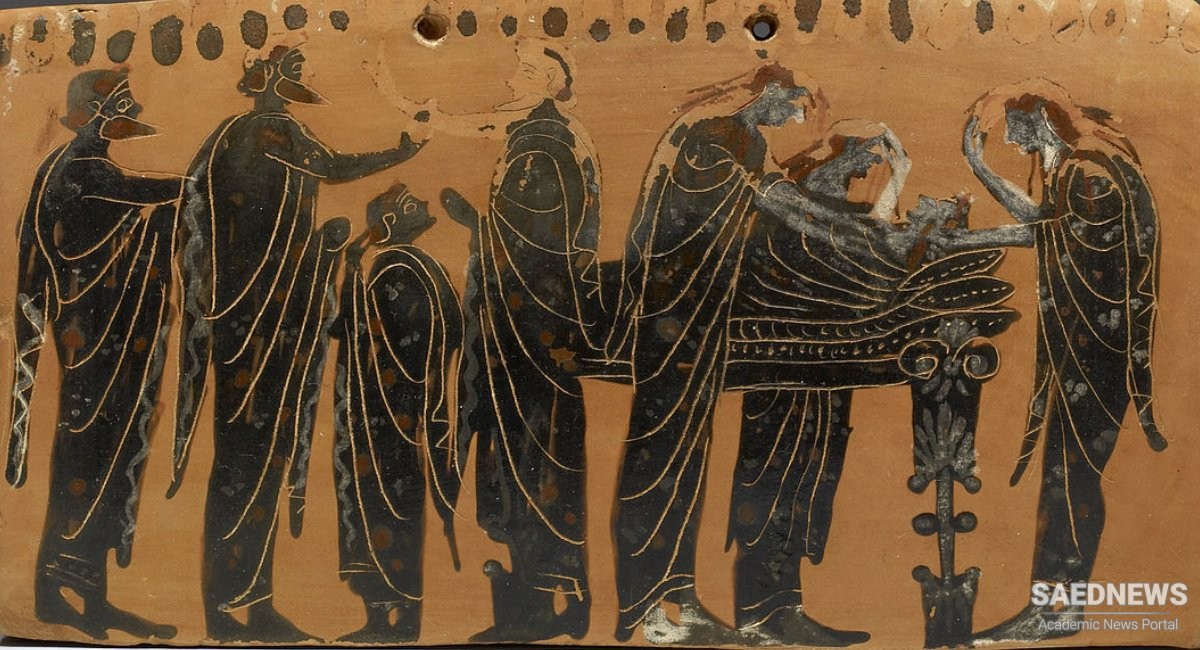The same rod was used by Sir Arthur Evans. He followed the legends of the Labyrinth, King Minos, and his dominion of the seas. Thence was first revealed the full extent and importance of the Minoan-Mycenaean civilization. Only in one case have results been wanting, when Dorpfeld sought for the palace of Odysseus upon Ithaca-Leucas. What was found there that is celtainly Mycenaean is no more than has been found even outside Greece-mostly sherds. And a moment's thought reveals the cause. The Odysseus myth is young, it is not a genuine heroic legend but a romance, built up on the common motif of the faithful wife who waits for her absent husband and in spite of everythll1g is finally reunited to him. Traces of the Mycenaean culture have been eagerly sought in Homer, but remarkably little attention has been paid to the Mycenaean connexions of the mythology. At most a general remark bas been made, as by Professor Wide, to the effect that the formation of the legends took place in the main in Mycenaean times. It must be so, if so much else in Homer goes back to the same period. For already in Homer the mythology has reached a fully developed stage, even if it does not in all respects appear in the form most familiar to us. Its further development, its humanizing, has even proceeded very far.
The myths, as has been mentioned, afforded a clue to the discovery of some of the principal centres of Mycenaean civIlization, but, curiously enough, the relation between the places of mythology and the Mycenaean centres which is proved hereby has never been followed up. No one has ever put the question, and by a systematic inquiry endeavoured to answer it: Is there a persistent connexion between the centres of Mycenaean culture and the myths, in particular the great cycles of the myths? In other words, are the chief centres of Mycenaean civilization also the centres referred to in the myths? If they are, it IS proved that in the main the development and localIzing of the cycles of the myths falls withm the Mycenaean period, with important consequences for our investigation of the myths. An inquiry of this kind is very simple and can be made in a brief survey.
TIryns isthe home of Heracles and to that town belong the central legends of his exploits, although the incidents of his birth are connected with Thebes. To the former town, and not to Mycenae, he drives Geryon's oxen, according to Hesiod. From its walls he treacherously hurls down Iphitus. There he lives as a vassal under Eurystheus, king of Mycenae. Herein is reflected the fact that Tiryns is the older town, which waslater ousted by Mycenae. This is the meaning of the legend, and archaeology corroborates it. To Tiryns also belongs the myth of the Proitides, which in its present form belongs to a younger type. With this city, too, the Bellerophon story is properly connected, for the intrigue which gives occasion to the exploits of the hero is carried on at the royal court of Tiryns, although he is genealogically referred to Corinth.


 Religious Outlook of the Ancient Persians and Its Cultural Relevance
Religious Outlook of the Ancient Persians and Its Cultural Relevance














































